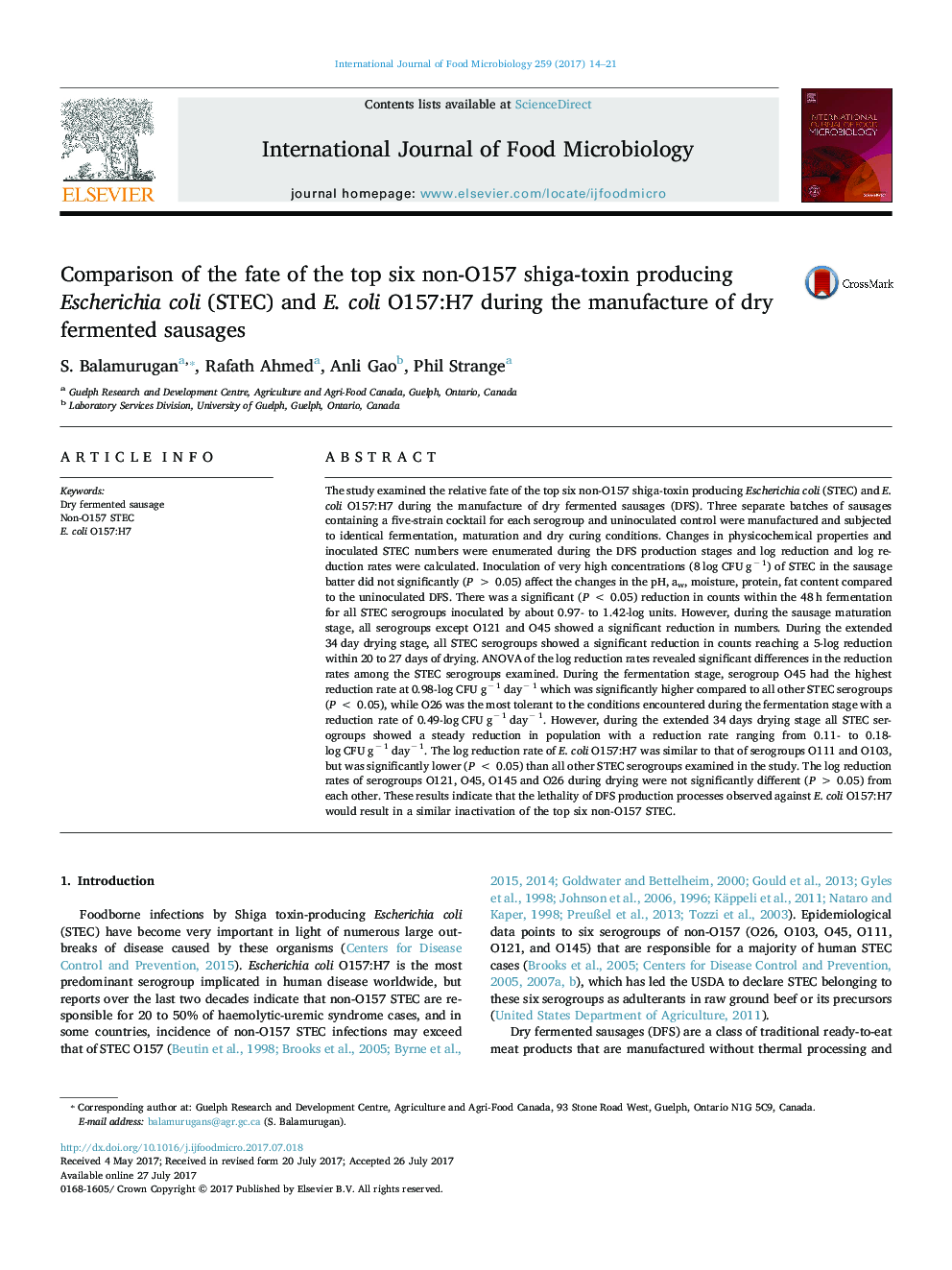| کد مقاله | کد نشریه | سال انتشار | مقاله انگلیسی | نسخه تمام متن |
|---|---|---|---|---|
| 5740728 | 1616524 | 2017 | 8 صفحه PDF | دانلود رایگان |

- Survival of top six non-O157 STEC in dry fermented sausages.
- Fate of the top six non-O157 STEC was similar to that of E. coli O157:H7.
- Include non-O157 STEC with O157:H7 in pathogen cocktail for process validation.
The study examined the relative fate of the top six non-O157 shiga-toxin producing Escherichia coli (STEC) and E. coli O157:H7 during the manufacture of dry fermented sausages (DFS). Three separate batches of sausages containing a five-strain cocktail for each serogroup and uninoculated control were manufactured and subjected to identical fermentation, maturation and dry curing conditions. Changes in physicochemical properties and inoculated STEC numbers were enumerated during the DFS production stages and log reduction and log reduction rates were calculated. Inoculation of very high concentrations (8 log CFU gâ 1) of STEC in the sausage batter did not significantly (P > 0.05) affect the changes in the pH, aw, moisture, protein, fat content compared to the uninoculated DFS. There was a significant (P < 0.05) reduction in counts within the 48 h fermentation for all STEC serogroups inoculated by about 0.97- to 1.42-log units. However, during the sausage maturation stage, all serogroups except O121 and O45 showed a significant reduction in numbers. During the extended 34 day drying stage, all STEC serogroups showed a significant reduction in counts reaching a 5-log reduction within 20 to 27 days of drying. ANOVA of the log reduction rates revealed significant differences in the reduction rates among the STEC serogroups examined. During the fermentation stage, serogroup O45 had the highest reduction rate at 0.98-log CFU gâ 1 dayâ 1 which was significantly higher compared to all other STEC serogroups (P < 0.05), while O26 was the most tolerant to the conditions encountered during the fermentation stage with a reduction rate of 0.49-log CFU gâ 1 dayâ 1. However, during the extended 34 days drying stage all STEC serogroups showed a steady reduction in population with a reduction rate ranging from 0.11- to 0.18-log CFU gâ 1 dayâ 1. The log reduction rate of E. coli O157:H7 was similar to that of serogroups O111 and O103, but was significantly lower (P < 0.05) than all other STEC serogroups examined in the study. The log reduction rates of serogroups O121, O45, O145 and O26 during drying were not significantly different (P > 0.05) from each other. These results indicate that the lethality of DFS production processes observed against E. coli O157:H7 would result in a similar inactivation of the top six non-O157 STEC.
Journal: International Journal of Food Microbiology - Volume 259, 16 October 2017, Pages 14-21